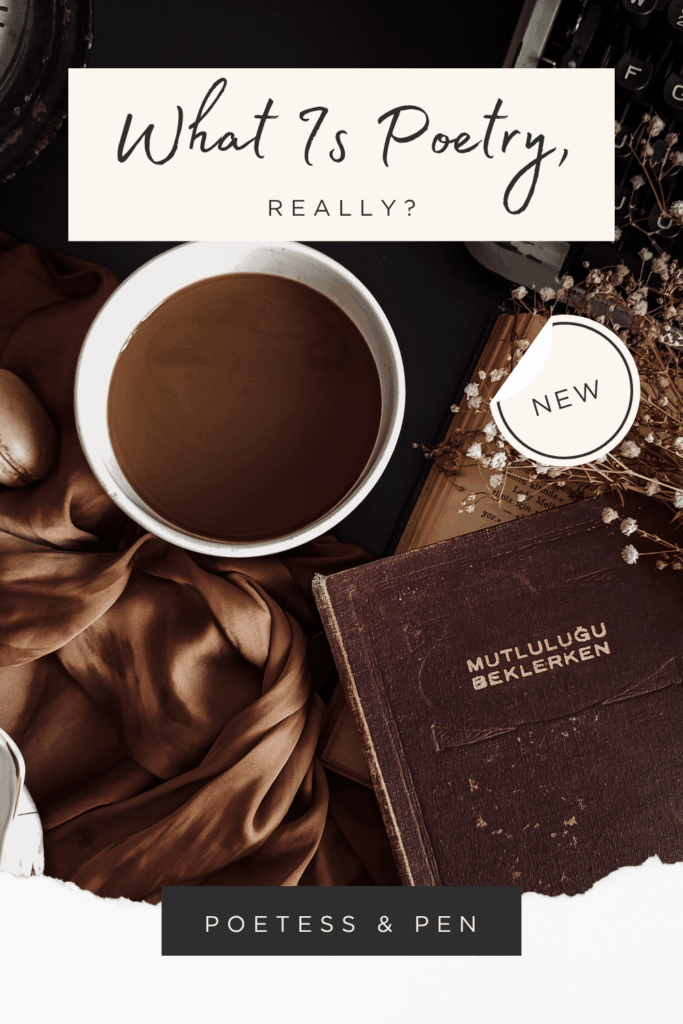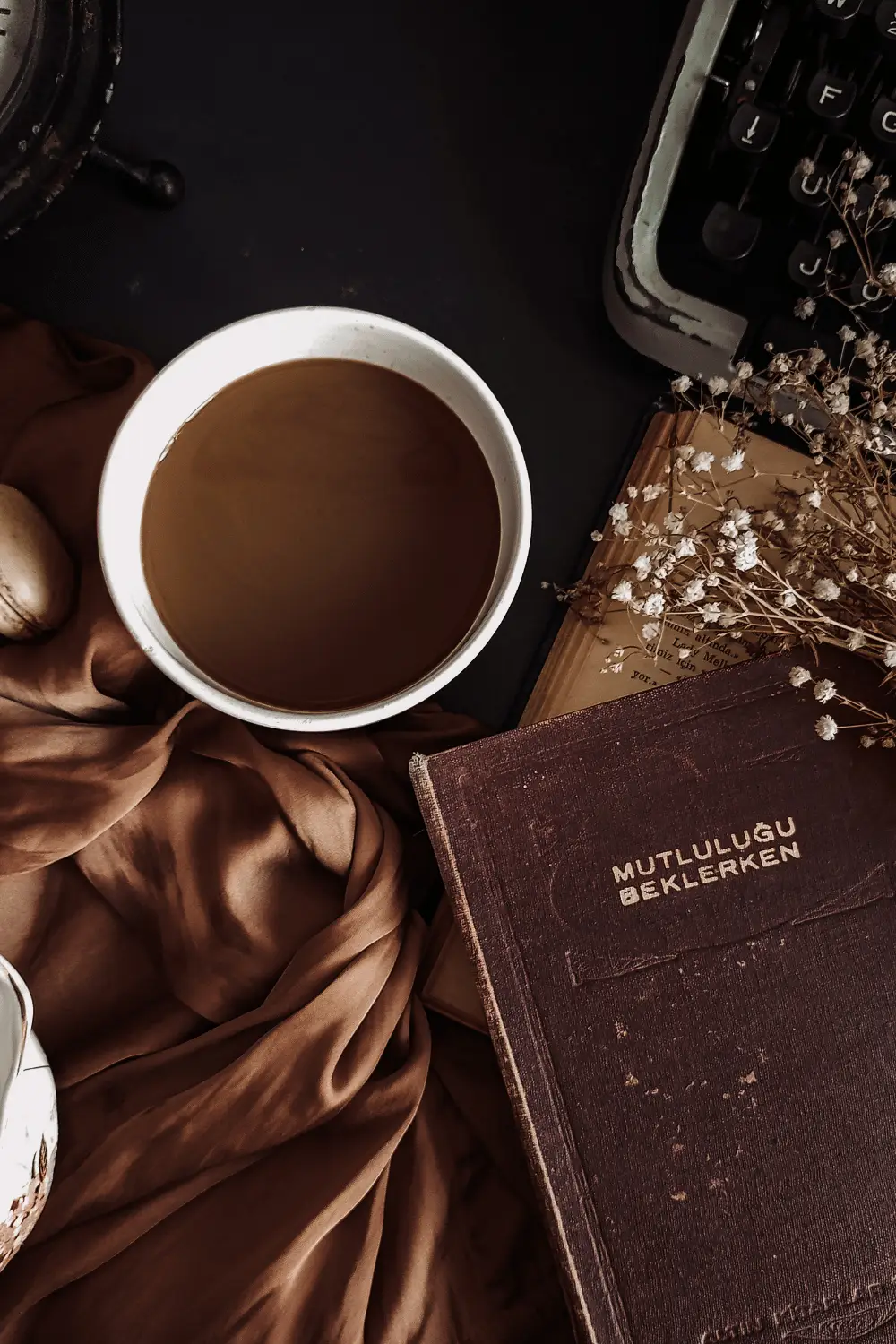More Than Words on a Page
What is poetry, really?
Some say it’s rhythm and rhyme. Others say it’s emotion put into words. But poetry is older and deeper than that. Poetry is a form of expression that combines rhythm, emotion, and imagery to convey meaning beyond ordinary language. It’s the heartbeat of communication—the way people have always tried to make sense of what they feel, see, and believe.
Long before we had books or classrooms, there were poems sung by campfires, whispered in prayer, and passed down through stories. Poetry has always been how we remember, how we celebrate, and how we heal. It turns a simple moment—a sunrise, a goodbye, a child’s laugh—into something that stays with us long after the day has gone.
As a teacher, I’ve always believed poetry isn’t meant to be locked away in dusty old textbooks. It’s meant to be lived. It belongs to the everyday—the cups of coffee, the garden gates, the love notes tucked in lunchboxes.
In Simple Terms:
Poetry is language shaped with intention. It uses rhythm, imagery, and emotion to express what can’t be said plainly—turning feelings and moments into art.
In this article, we’ll explore what poetry truly is: not just the study of words, but the art of feeling them. We’ll look at its history, its heartbeat, and why it still matters today.
Because poetry, at its best, reminds us that language can do more than explain—it can sing.
The Ancient Roots of Poetry: A Timeless Art Form
Before poetry was ever written down, it was spoken—or sung. Long before pencils, parchment, or printing presses, people gathered around fires and told stories that rhymed and rolled with rhythm. It helped them remember. It helped them feel.
The first poets weren’t famous writers—they were farmers, shepherds, mothers, and travelers. They spoke from the heart about what they saw: the stars overhead, the changing seasons, the ache of loss, and the joy of love. Poetry was how they passed down wisdom, history, and faith when there were no books to hold it.
Think about the Psalms in the Bible—those beautiful verses of prayer and praise. Or the epic poems of Greece, like The Odyssey, carried on through generations before anyone ever wrote them down. Even lullabies, hymns, and folk songs have poetic roots. They use rhythm and repetition to help the listener remember—and to help the heart connect.
Poetry began as sound and story woven together, like melody and meaning walking hand in hand. The rhythm gave structure; the words gave soul. That’s why even today, when you read a poem aloud, it feels a little like music.
From ancient times until now, poetry has always been the language of memory and emotion—a literary form that captures what can’t be kept any other way.
The Anatomy of Poetry: Rhythm, Emotion, and Imagery
Every poem, no matter how simple or complex, has three things working quietly inside it—rhythm, emotion, and imagery. Think of them as the heartbeat, the soul, and the eyes of a poem.
Rhythm gives poetry its pulse. It’s the beat that makes the words flow, even when they don’t rhyme. Some poems march with steady steps, like a drumline; others sway gently, like a lullaby. You can feel rhythm by reading a poem aloud—it’s in the pauses, the patterns, and the breath between lines. Even free verse, which doesn’t follow a strict pattern, still carries its own natural cadence, like the rise and fall of conversation.
Emotion is the soul of poetic expression. A poem doesn’t just tell you something—it makes you feel it. Joy, sorrow, awe, heartbreak, hope—all find their way into a few well-chosen words. When someone says, “I don’t understand poetry,” what they usually mean is, “I haven’t felt it yet.” The best poems speak to something inside us that logic can’t quite reach.
Imagery gives poetry its sight and sound. It paints pictures in the reader’s mind using ordinary words in extraordinary ways. A poet might not say “the sun set.” Instead, she might say “the sky blushed and bowed toward night.” Those small choices of language turn plain description into something you can see, hear, or even taste.
When rhythm, emotion, and imagery come together, poetry stops being just words on a page—it becomes an experience. It moves. It breathes. It lingers. And sometimes, it even changes the way we see the world.
The Craft and the Calling of Writing Poetry
Poetry isn’t just a gift—it’s also a craft. It’s something we can learn, shape, and grow into over time. But it’s also a calling, a quiet nudge that whispers, Pay attention. Write this down.
The craft side of poetry is where we learn the tools: rhythm, rhyme, metaphor, and form. These are the bones of a poem—the structure that helps it stand tall. Think of them like a painter’s brushes or a musician’s notes. A poet learns how to use line breaks for pause, how to choose one powerful word instead of three, and how to make sound and meaning work together.
But then there’s the calling—the part that can’t be taught. That’s the tug in your chest when something ordinary suddenly feels holy. It’s the urge to stop and capture a feeling before it fades. Poets notice things most people rush past—the pattern of rain on the window, the way sunlight hits a teacup, or the silence that follows hard news.
Poetry asks us to look closely and listen deeply. It’s not about using fancy words or sounding “artsy.” It’s about telling the truth beautifully and simply. The best poets write not to impress, but to express—to take what’s inside the heart and give it a voice.
When the craft and the calling come together, something remarkable happens: a poem begins to speak for both the writer and the reader. It becomes a shared space where words meet wonder.
Why Poetry Still Matters
In a world that moves faster every day, poetry invites us to slow down. It asks us to sit still for a moment—to breathe, to listen, to feel. While screens flash and notifications buzz, poetry reminds us that meaning is found in quiet pauses, not constant noise.
We still need poetry because we still need connection. A poem can comfort us when nothing else makes sense. It can lift our eyes when life feels heavy. It can help us say what our hearts know but our mouths can’t find the words for. Whether it’s a few lines scribbled in a journal or a verse read at a wedding or funeral, poetry gives shape to emotions we all share.
Poetry also teaches us to notice again. It helps us see beauty in the small things—the steam rising from a morning cup of coffee, the hum of cicadas at dusk, the laughter echoing through a hallway. Those moments may not seem like much, but poetry tells us they matter.
Even in this modern age, poetry shows up everywhere: in songs on the radio, in children’s bedtime rhymes, in the Scriptures we read for comfort, and even in social media captions that make us pause and smile.
Poetry matters because it keeps our hearts human. It reminds us that we’re not alone in what we feel. And when the world grows loud or cold or hurried, a single poem can feel like a hand reaching out, saying, I understand.
Debunking the Myths
So many people tell me, “I’m just not a poet.”
But the truth is—you probably are. You just don’t call it that yet.
There are a few stubborn myths that make poetry feel out of reach, especially for beginners. Let’s clear those up right now.
Myth #1: Poetry has too many rules.
You don’t have to rhyme, count syllables, or follow strict forms to write poetry. Those can be helpful tools, but they’re not required. Poetry can be free and flowing, or tight and rhythmic—it’s your choice. Think of the “rules” as gentle guidelines that you can bend or break once you understand them.
Myth #2: Poetry is hard to understand.
Some poems are complex, yes, but poetry at its heart is about emotion, not confusion. You don’t have to analyze every line like a riddle. If a poem makes you feel something—peace, nostalgia, hope, even discomfort—then you understand it. Poetry speaks to the heart first and the mind second.
Myth #3: I’m not poetic enough.
Poetry isn’t about being fancy—it’s about being real. You don’t need special words or training. You just need honesty. A poem can begin with a single observation: the way light hits your kitchen floor, or how quiet the house feels after everyone’s gone to bed. Poetry begins when you pay attention.
The truth is, anyone can write poetry. Anyone can be a poet. You already have what you need—your senses, your memories, your heart. Poetry simply gives you permission to notice and name what’s beautiful or broken in your world.
Closing Thoughts: The Living Language of the Soul
From ancient storytellers to modern poets with laptops and coffee cups, poetry has always been our way of saying, this is what it feels like to be alive.
It’s the language of the soul—quiet, honest, and full of wonder. Poetry doesn’t always offer answers, but it helps us ask better questions. It helps us hold joy and sorrow at the same time. It takes the ordinary and reminds us that, when seen through a tender heart, nothing is ordinary at all.
You don’t have to write for a living to call yourself a poet. You just have to notice. You just have to let words rise up when life stirs you. Poetry lives in the way you describe a sunset to a friend, the line you jot in your journal, the prayer you whisper when the house is still.
Poetry isn’t something distant or lofty—it’s something human. It’s the thread that ties your story to everyone else’s.
So the next time you read or write a poem, don’t think of it as a school assignment or a mystery to solve. Think of it as a conversation—between your heart and the world around you.
Because poetry, at its simplest and truest, is this:
the language of the soul learning to speak in ink.
🖋️ Journal Prompt
Think about a moment from your week that touched your heart—a sunrise, a conversation, a song on the radio. Write a few lines about it without worrying about rhyme or structure. Let your heart lead, and see where the words take you.
💌 Before You Go
If this reflection stirred something in you, stay awhile at Poetess & Pen. You’ll find gentle lessons on writing, journaling prompts for quiet mornings, and poems that remind us to see beauty in the everyday. Subscribe to the newsletter for encouragement and inspiration delivered right to your inbox.

What makes poetry different from prose?
Poetry uses rhythm, line breaks, and vivid language to create emotion and imagery. Prose tells; poetry shows—it paints pictures and feelings with fewer words.
Do poems have to rhyme?
Not at all. Some of the most powerful poems don’t rhyme at all. What matters most is rhythm and truth—how the words sound and feel when you read them aloud.
Can anyone write poetry?
Yes! Poetry belongs to everyone. If you can notice beauty, feel deeply, and describe what you see or sense, you can write poetry.
Where should I start if I want to learn to write poetry?
Start small. Read poems you enjoy and copy their rhythm. Try writing a short piece about something simple—a sound, a color, or a memory. Don’t worry about rules. Just write.
📖 Glossary
Cadence: The natural rise and fall of sound in a poem or voice.
Imagery: Descriptive language that appeals to the senses—what you can see, hear, or feel.
Metaphor: A comparison that shows one thing as another to create deeper meaning (for example, “Her heart was an open window”).
Free Verse: A style of poetry that doesn’t follow set rhyme or rhythm patterns.
Line Break: Where a poet chooses to end a line—used for rhythm, pause, or emphasis.
Stanza: A group of lines in a poem, like a paragraph in prose.
📍Don’t Forget To Save This Article On Pinterest ⤵︎



